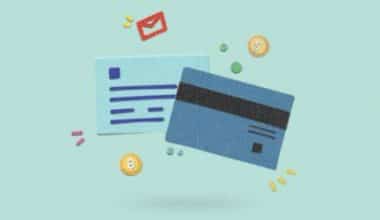Paywalls are frequently implemented into content or websites so that visitors can browse before subscribing. The term “soft” paywall refers to this. This format is commonly used by news sources, who, for instance, give readers access to five free articles per month before collecting a subscription fee. Soft paywalls can be used to set up various membership tiers. Therefore, someone might start a free online community but charge for a premium membership that would provide access to other features—like a mastermind or online course—and would also include access to the community.
Check out what IS A WIREFRAME: Web Design, Mockup, UX, & Difference
Contrarily, a “hard” paywall is one that entirely blocks access to material and prevents reading without payment. As clients no longer benefit from the “free trial” effect of the soft paywall, selling may become more difficult. Yet in situations when content is either unique or great enough that members will pay the money upfront, a hard paywall may be a suitable fit. In any case, if you’ve ever encountered a paywall, you’ve probably seen a pop-up that says something like, “Log in or subscribe to continue using our site.” With the growth of blockchain technology and cryptocurrencies, paywalls are developing. For instance, you can now use token-gating on Mighty Networks to monetize a community!
What Is a Paywall?
A paywall is a term used to describe a strategy for limiting access to online material through a paid subscription. Paywalls are a popular method used by publishers of digital material, such as newspapers, magazines, and their associated publishing houses, to monetize their websites. Simply put, the paywall is a system that prohibits access to specific web content by Internet users without a paid membership. In addition, a paywall is only a virtual barrier erected in front of the content of your website. Users can either sign up for your website or make a one-time payment to activate this gate. Paywalls obstruct access to content by demanding payment before allowing access. In most cases, a paywall operates using a subscription-based business model. For access to the limited content, users have the option of paying in advance, partially, or entirely.
The technology underlying paywalls for news operates as follows. The blocking of non-paying IP addresses is the first priority for subscription-based news platforms. Having to check in to a paywall is the first obstacle to reading content. After authenticating subscribers, the paywall opens access to the material for authorized users. Depending on the type, the paywall’s encryption, authentication, and coding method may be different.
Bypass Paywall
Generally speaking, it is illegal to turn off or get around a paywall for a news piece. News organizations erect paywalls to limit access to their material to customers who have paid for it or who have subscribed to their services. Paywalls are one of the contemporary web’s” most irksome features. More and more publishers are making the decision to hide their content behind email registration forms or paid memberships. And I’ll cover both how to get around paywalls and their purpose in this essay.
How to Bypass Paywalls
On GitHub, there is an open-source project called Bypass Paywalls. You must install this specific extension if you want to use it. Because neither the Mozilla nor the Google Chrome marketplaces offer it for download. For the extension itself, browsers running Chrome, Firefox, and Edge are all supported. Not to mention, the project has received over 20,000 GitHub stars. As a result, it has been trusted for a long time. The project page itself contains a complete list of the websites you can avoid using this plugin.
Incognito Mode
A website may occasionally keep track of how many free articles you have read using cookie data. You will get a paywall once you’ve reached the limit. Incognito Mode is one of the simpler ways to get around that. Likewise, it is called a private mode. On any current browser, you can use Incognito by heading to Settings and choosing a new Private Window. You will now have a “clean slate” with no cookie history, allowing you to access material that is normally behind a cookie paywall.
Incoggo
The Incoggo creators intend to enter the ad-blocker business. Yet, they currently offer free Mac-based tools to get around paywalls. Once more, only OSX users may access this software, but a Windows version should appear soon. According to their most recent blog posts, the project appears to be actively being worked on. This is wonderful news because it shows that the program operates as required.
Paywall Remover
Hard paywalls and soft paywalls are the two types of paywalls that prevent access to articles. The item is still on the page, but soft paywalls are being employed to conceal it. Hard paywalls prevent users from accessing the article until they pay. This indicates that you must pay to view the content. Testing the article to see if the paywall is still in place would be the easiest method to find out. If not, there is probably a permanent hard paywall. Let’s review some paywall remover options.
#1. 12ft Ladder Options
The description of 12 ft Ladder, a paywall remover in the news and books category, reads, “Bypass any paywall by prefixing 12 ft.io/ to the URL of any paywalled website.” For a range of operating systems, including Google Chrome, Firefox, Mac, Windows, and Linux, there are five options for a 12 ft. ladder. The ideal substitute is Unpaywall, which is open-source and free. The Bypass Paywalls, Bypass Paywalls Clean, Incoggo, and Anti-Paywall apps are excellent alternatives to the 12 ft ladder
#2. Anti-Paywall
A browser add-on called anti-paywall increases the likelihood that paywalls will be automatically discarded when pages on compatible websites are accessed.
#3. Bypass Paywalls Clean
Circumvent paywalls. You can read articles from (supported) websites that use a paywall, thanks to the browser extension “Clean.” In order to get around the paywall, you can also add domains as custom sites. For corrections and new sites, weekly updates are made available.
Bypass Paywalls Clean Features
No outside advertising is present in Bypass Paywalls Clean. It removes them all
12 Ft Ladder Paywall
Several websites, especially news websites, now put their content behind paywalls because relying solely on advertising revenue is no longer practical. For access to the content, readers must pay either a one-time or recurring fee. You should definitely pay to read these articles if you can. Yet, occasionally the paywall prevents you from skimming an interesting article because you are in a rush or simply need to. However, a 12 ft ladder can be useful in this situation.
You can bypass paywalls on websites using an online tool called 12 ft Ladder. You can set it on the paywall like a ladder and climb over it to see what’s on the other side.
The concept is rather straightforward: news organizations want Google to index their material so that it appears in search results. So the Google crawler is not presented with a paywall. The Google crawler will cache a duplicate of the site each time it visits, which is to our advantage. All it does is display the page to you in cached, unpaywalled form.
How to Use 12 Ft Ladder to Remove Paywalls
It’s really simple to remove paywalls from websites using 12ft Ladder. Simply place 12ft.io/ before the URL of any website with a paywall. Also, you can go to 12ft.io and paste any URL for a paywalled website into the remove paywall URL entry box. Using the 12ft shortcut on an iOS device will allow users who read articles on mobile devices to bypass paywalls. Take note that 12ft Ladder may not be able to access all paywalled websites, but it is still worthwhile to give it a shot. We would always advise you to pay whenever and whenever you can, though.
What Is an Example of a Paywall?
In particular, a user is prevented from accessing your material by a paywall and is obliged to pay a monthly fee. For instance, the industry leader in video streaming, Netflix, uses a barrier to gate their content, enabling only subscribers to access movies and TV shows on their site. The Times and Financial Times are two examples of hard paywalls in use. Hard paywalls are known to cause websites to lose a sizable portion of their audience. Visitors can leave the website and search for the information they need elsewhere.
How Can I Bypass Paywalls?
Techniques for Avoiding a Paywall
- Use the Firefox extension to “Bypass Paywalls.”
- Try the Chrome Extension “Unpaywall”
How to break through barriers, in order to get past a soft paywall,
- Use Incognito mode.
- Download Postlight Reader for Edge or Chrome.
- On your device, try the reading mode.
- Use any browser to try 12ft.io.
- Go to the website or article’s archived version.
- Copy and paste the title into Google.
Is Removing a Paywall Illegal?
Methods for getting over paywalls that are being used to safeguard digital media are developed and spread just as swiftly. The Digital Millennium Copyright Act (DMCA) forbids getting around a technological control method that effectively restricts access to a work that is protected by copyright. Also, said publishers are aware that they are providing a fully free version of their content. Also, reading the Google cache is not prohibited by any rules or laws, so there is absolutely no legal problem with a customer getting around a barrier in this method.
How Does a Paywall Work?
Publications might impose a digital payment barrier called a paywall on specific online offers. Users can only access content that is protected by a paywall after making a payment or signing up for a subscription. By requiring users to pay to view content, paywalls obstruct access to it. A paywall often operates via a subscription-based business model. Customers have the option of paying monthly, partially, or entirely in order to access the restricted content.
What Is the Best Site to Bypass Paywall?
Incoggo, 12 Foot Ladder, and RemovePaywall are the top substitutes for bypassing paywalls. Use any browser to try 12ft.io. Visit https://12ft.io, paste the article’s URL there, then select Remove Paywall by clicking or tapping.
Why Is Everything Locked Behind a Paywall?
Publishers have “locked” their material behind paywalls to prevent access from non-subscribed users due to declining digital advertising revenues and an increase in ad fraud.
Using reading extensions like Reader Mode is the simplest way to get past a barrier. The article’s body will be transformed into a lovely and unobtrusive format by Reader Mode. The overlay components that made it hard to read the restricted content will be removed, which is the most crucial change.
Conclusion
Content paywalls enable media outlets to make money without relying on online advertising. In a free-market environment where ad blockers reduce ad revenue, news paywalls can aid media companies in surviving. The capacity to create high-quality, original content, identify what readers prefer, and then restrict that content at appropriate points for free users are requirements for a successful digital subscription business. Start with a low-risk model if you’ve never used a paywall before, then work your way up to optimization.
Now that you know how to bypass paywalls on Android and iPhone, read on. The methods mentioned above work on both Android and iPhone. Peak one, as per your preference. I’m hoping they’ll all function properly. Simply get started and finish the job. We appreciate you visiting our page. I hope this post has given you its full potential.
Related Articles
- BYPASS TRUST: Definition and How It Works
- Financial Times: History, Subscription, News (+ Free Subscription)






